Alfalfa
- Scientific Name: Medicago sativa
- Plant Family: Fabaceae
- Parts Used: The leaves, sprouts, and seeds.
- Actions: anti-anemic, appetizer, diuretic, galactagogue, laxative, nutrient, tonic.
- Qualities: Neutral thermal nature; Bitter flavor; Dries dampness, Spring, Yin
The basics:
Alfalfa follows the doctrine of signatures: its ability to produce exceptional roots benefits our “roots,” which are often identified physiologically as our intestines and kidney/bladder functions. Alfalfa cleans and tones the intestines and takes harmful acids out of the blood. It benefits the urinary system and intestines and detoxifies the body.
Alfalfa contains eight enzymes which help assimilate protein, fats, and carbohydrates. It is safe food even for children and helps nursing mothers produce more milk.
In ancient India, Ayurvedic texts prescribe the use of Alfalfa seeds and sprouts for improving blood cell production and its leaves and stem as a good source of protein and minerals.
Nutritional Value:
Alfalfa is rich in chlorophyll, carotene, protein, calcium and other minerals, vitamins in the B group, vitamin C, vitamin D, vitamin E, and vitamin K. Other important nutrients include iron, magnesium, potassium, phosphorus, sodium, sulfur, silicon, chlorine, cobalt, and zinc. Alfalfa also contains vitamins K and P, and abundant chlorophyll.
The sun-dried hay of alfalfa has been found to be a source of vitamin D, containing 48 ng/g (1920 IU/kg) vitamin D2 and 0.63 ng/g (25 IU/kg) vitamin D3. There is also reference to vitamin D2 and vitamin D3 being found in the alfalfa shoot.
Medicinal uses:
Alfalfa is used medicinally in a variety of ways, depending on the country, culture, and healing tradition.
- In China it is considered to have the following qualities: Anodyne, Depurative, Emetic and is used to treat Fever, Gravel, and Dysuria.
- In Iraq it is commonly used to treat Arthritis.
- In Turkey, in addition to treating Arthritis, it is considered to be a Cardiotonic and used to treat Scurvy.
- In the United States it is believed to be Cyanogenetic, and used in the treatment of and prevention of Cancer.
- Elsewhere it is used to treat Arthritis, Boils, as an Emmenagogue, Lactagogue, and for Scurvy.
Note: In this day and age of global information via the internet and social media, these dividing lines have become increasingly blurred.
Alfalfa is used for kidney conditions, bladder and prostate conditions, and to increase urine flow. It is also used for high cholesterol, asthma, osteoarthritis, rheumatoid arthritis, diabetes, upset stomach, and a bleeding disorder called thrombocytopenic purpura. People also take alfalfa as a source of vitamins A, C, E, and K4; and minerals calcium, potassium, phosphorous, and iron.
Other uses include edema, weight loss, bladder stones, plantar warts, chronic sore throat, fevers, gas pains, peptic ulcers, drug and alcohol addiction recovery.
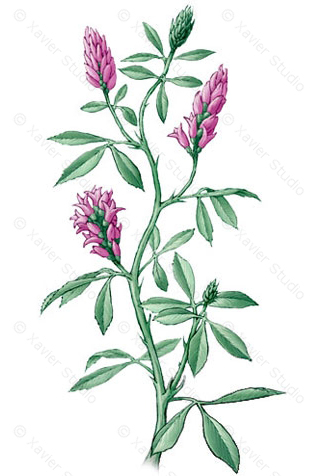 Alfalfa is helpful for chronic joint inflammation and aiding female hormonal balance. It comforts and strengthens the immune system. Alfalfa is rich in vitamins, minerals and other nutrients that play an important role in the maintenance of a healthy body. It contains protein, vitamin A, vitamin B1, vitamin B6, vitamin C, vitamin E, and vitamin K. It also contains calcium, potassium, carotene, iron and zinc and is considered one of the healthiest plant foods, providing an excellent range of nutritive properties for good health and well being.
Alfalfa is helpful for chronic joint inflammation and aiding female hormonal balance. It comforts and strengthens the immune system. Alfalfa is rich in vitamins, minerals and other nutrients that play an important role in the maintenance of a healthy body. It contains protein, vitamin A, vitamin B1, vitamin B6, vitamin C, vitamin E, and vitamin K. It also contains calcium, potassium, carotene, iron and zinc and is considered one of the healthiest plant foods, providing an excellent range of nutritive properties for good health and well being.
Interestingly, alfalfa is a treatment hay fever. Externally the seeds can be made into a poultice for boils, to soothe insect bites, and reduce inflammation. It alkalizes and detoxifies the body. Binds carcinogens in the colon to help speed up their elimination from the body.It is an overall tonic for general health, fatigue, weight gain, and debility. Alfalfa also stimulates the growth of supportive connective tissue, and is useful in the treatment of diabetes.
Alfalfa is a herb rich in protein and the vitamins A, D, E and K. The leaves contain eight of the essential amino acids.Such a a nutrient-rich formula, can be used to replenish the body with vitamins and minerals. It is specifically indicated for those with poor diets and inadequate nutrient intake.
Daily Dosages:
In addition to alfalfa sprouts found in most supermarkets, alfalfa is available as a dried leaf herb, in tablets, capsules, and powders.
- 2 to 3 cups tea
- 2 to 4 grams in capsules or pills 3 times a day
- 6 to 12 grams powder
- 3 ounces sprouts
To make tea, steep 1 tablespoon seed or 2 ounces dried leaf in 1 quart boiling water. In powder form, the pleasant taste of alfalfa is a welcome addition to soups and salads.
For high cholesterol: a typical dose is 5 to 10 grams of the herb, or as a steeped strained tea, three times a day. 5 to 10 mL of a liquid extract (1:1 in 25% alcohol) three times a day has also been used.
Herbal Combinations:
To get more natural vitamins, combine Alfafa with herbs such as Nettle and Rosehip, Nettle is high in both vitamin C and Iron, thus ensuring that energy levels and prevention of cellular damage is assisted. Nettles acts as a blood tonic with the ability to strengthen the body’s natural resistance. Rosehip is also extremely high in vitamin C and is one of the best herbs used for its antioxidant action on the body. It also assists with maintaining healthy collagen.
Cosmetic Uses:
Alfalfa extract (Medicago Sativum Extract) can be an antioxidant in skin-care products, it is said this extract is a great source of protein, minerals and vitamins C,D,E,K for the skin. Conditions and increases skin metabolism to promote skin healing,used as a topical skin conditioner.Alfalfa Extract is primarily used in manufacture of natural face masks and lotions. Saponins in alfalfa extract acts as natural foaming agent. Boots, Clarins and Lancome are using alfalfa extract in their skincare products.
Alfalfa Sprouts:
Alfalfa is America’s favorite sprout and is considered more nutritionally concentrated than other sprouts, primarily because of its rich mineralization. The tiny alfalfa seed produces a root that can reach 100 feed into the earth, where it has access to minerals and trace elements untouched by other plants.
Alfalfa sprouts are commonly used in salads. Sprouting alfalfa seeds is the process of germinating seeds for consumption usually involving just water and a jar.
However, the seeds and sprouts must be rinsed regularly to avoid the accumulation of the products of decay organisms along with smells of rot and discoloration. Sprouting alfalfa usually takes three to four days with one tablespoon of seed yielding up to three full cups of sprouts.
Instructions for making sprouts can be found here: How to Make Sprouts.
Folk and Other Names:
- Feuille de Luzerne
- Grand Trèfle
- Herbe aux Bisons
- Herbe à Vaches
- Lucerne
- Luzerne
- Medicago
- Medicago sativa
- Phyoestrogen
- Phyto-œstrogène
- Purple Medick
- Sanfoin
Historically:
Arabs were the first to discover alfalfa and found it a highly strengthening food, both for themselves and their race horses. Because of its attributes, they named it al-fal-fa, which means “father of all foods.”
In the 16th century, Spanish colonizers introduced alfalfa to the Americas as fodder for their horses. They were aware that alfalfa is better than grass as food for working horses (alfalfa had more energy).
More Medicinal Uses and Info:
Like many useful herbs, alfalfa has been used in the treatment of just about everything. It is a tonic, and acts as a general nutritive and restorative herb. Here’s a definitive list of the uses and qualities of this plant:
- Acidity: Neutralizes acid, or makes alkaline, Acidosis
- Blood Conditions: Antianemic, for anemia (with Nettles and Oatstraw); blood thinner helps with blood clots,
- Brain and Nervous System Conditions: Recuperation from narcotic and alcohol addiction
- Cardiovascular Conditions: prevents heart disease, prevents the formation of atherosclerotic plaques, stroke, hardening of the arteries, high cholesterol, preventative (heart disease, strokes), Atherosclerosis,
- Deficiencies: Calcium deficiency, Scurvy,
- Digestion: Nutrient, Nutritive, aids digestion, improves problems (acute and chronic), wasting (weight loss), improves appetite, indigestion, malnutrition, Stomachache,
- Female Conditions: Late or irregular menstruation, menopausal symptoms, stimulates lactation (milk supply) in nursing mothers – increases quality and quantity, the seeds are Abortifacient (can cause miscarriage), Hormone balancing (estrogen)
- Fungal Conditions: Anti-fungal
- Gastrointestinal Conditions: Appetite stimulant for loss of appetite; bowel problems; digestive disorders; dyspepsia; peptic ulcers; poor assimilation of nutrients; poor digestion; regulates the bowels; relieves gastric ulcers, regulates the bowels
- Genitourinary Conditions: Eliminates retained water, fluid retention and swelling, kidney, bladder and prostrate disorders, kidney stones, relieves urinary problems, urinary tract infections
- Glandular Conditions: Promotes pituitary gland function
- Inflammatory Conditions: Arthritis, Boils, Inflammation (acute or chronic), Ulcers
- Liver Conditions: Blocks absorption of cholesterol; detoxifies the the liver; jaundice
- Male Conditions: Prostrate disorders
- Respiratory Tract Conditions: Asthma, hay fever, allergies,
- Urinary Tract Conditions: Cystitis (acute or chronic), Diuretic, Kidney problems, Urinary problems, Urine burning, tonic for weakness of the urinary system
- Other Conditions: Bloating, backache (lower), bad breath, detoxification, Cancer prevention, Debility, Diabetes (with addition of high amounts of manganese), Fevers, Gout, Hangover, Illness, Infections, Insomnia, Rheumatism,
Habitat and Cultivation:
Alfalfa is a perennial forage legume which normally lives four to eight years, but can live more than 20 years, depending on variety and climate. The plant grows to a height of up to 1 m (3.3 ft), and has a deep root system, sometimes growing to a depth of more than 15 m (49 ft) to reach groundwater. Typically the root system grows to a depth of 2–3 metres depending on subsoil constraints.
Alfalfa is a small-seeded crop, and has a slowly growing seedling, but after several months of establishment, forms a tough “crown” at the top of the root system. This crown contains shoot buds that enable alfalfa to regrow many times after being grazed or harvested; however, overgrazing of the buds will reduce the new leaves on offer to the grazing animal.
The depth of the root system, and perenniality of crowns that store carbohydrates as an energy reserve, make it very resilient, especially to droughts.
This plant exhibits autotoxicity, which means it is difficult for alfalfa seed to grow in existing stands of alfalfa. Therefore, alfalfa fields are recommended to be rotated with other species (for example, corn or wheat) before reseeding.
Like other legumes, its root nodules contain bacteria, Sinorhizobium meliloti, with the ability to fix nitrogen, producing a high-protein feed regardless of available nitrogen in the soil. Its nitrogen-fixing ability (which increases soil nitrogen) and its use as an animal feed greatly improve agricultural efficiency.
Alfalfa can be sown in spring or fall, and does best on well-drained soils with a neutral pH of 6.8 – 7.5. Alfalfa requires sustained levels of potassium and phosphorus to grow well. It is moderately sensitive to salt levels in both the soil and irrigation water, although it continues to be grown in the arid southwestern United States, where salinity is an emerging issue.
Soils low in fertility should be fertilized with manure or a chemical fertilizer, but correction of pH is particularly important. Usually a seeding rate of 13 – 20 kg/hectare (12 – 25 lb/acre) is recommended, with differences based upon region, soil type, and seeding method. A nurse crop is sometimes used, particularly for spring plantings, to reduce weed problems and soil erosion, but can lead to competition for light, water, and nutrients.
In most climates, alfalfa is cut three to four times a year, but it can be harvested up to 12 times per year in Arizona and southern California. Total yields are typically around eight tonnes per hectare (four short tons per acre) in temperate environments, but yields have been recorded up to 20 t/ha (16 ts per acre). Yields vary with region, weather, and the crop’s stage of maturity when cut. Later cuttings improve yield, but with reduced nutritional content.
Commercial Uses:
Its primary use is as feed for high-producing dairy cows, because of its high protein content and highly digestible fiber, and secondarily for beef cattle, horses, sheep, and goats. Alfalfa hay is a widely used protein and fiber source for meat rabbits.
Fresh alfalfa can cause bloating in livestock, so care must be taken with livestock grazing on alfalfa because of this hazard.
In poultry diets, dehydrated alfalfa and alfalfa leaf concentrates are used for pigmenting eggs and meat, because of their high content in carotenoids, which are efficient for colouring egg yolk and body lipids.
Humans also eat alfalfa sprouts in salads and sandwiches. Dehydrated alfalfa leaf is commercially available as a dietary supplement in several forms, such as tablets, powders and tea.
Alfalfa is considered an insectary, a place where insects are reared, and has been proposed as helpful to other crops, such as cotton, if the two are interplanted, because the alfalfa harbors predatory and parasitic insects that would protect the other crop. Harvesting the alfalfa by mowing the entire crop area destroys the insect population, but this can be avoided by mowing in strips so that part of the growth remains.
Genetic modifications:
Roundup Ready alfalfa, a genetically modified variety, was released by Forage Genetics International in 2005. This was developed through the insertion of a gene owned by Monsanto Company that confers resistance to glyphosate, a broad-spectrum herbicide, also known as Roundup. Although most grassy and broadleaf plants, including ordinary alfalfa, are killed by Roundup; growers can spray fields of Roundup Ready alfalfa with the glyphosate herbicide and kill the weeds without harming the alfalfa crop.
Alfalfa and Bees:
Alfalfa seed production requires the presence of pollinators when the fields of alfalfa are in bloom. Alfalfa pollination is somewhat problematic, however, because western honey bees, the most commonly used pollinator, are less than ideal for this purpose; the pollen-carrying keel of the alfalfa flower trips and strikes pollinating bees on the head, which helps transfer the pollen to the foraging bee.
Western honey bees, however, do not like being struck in the head repeatedly and learn to defeat this action by drawing nectar from the side of the flower. The bees thus collect the nectar, but carry no pollen, so do not pollinate the next flower they visit. Because older, experienced bees do not pollinate alfalfa well, most pollination is accomplished by young bees that have not yet learned the trick of robbing the flower without tripping the head-knocking keel.
When western honey bees are used to pollinate alfalfa, the beekeeper stocks the field at a very high rate to maximize the number of young bees. Western honey bee colonies may suffer protein stress when working alfalfa only, because of shortage of one of the amino acids comprising the pollen protein, isoleucine.
Today, the alfalfa leafcutter bee is increasingly used to circumvent these problems. As a solitary but gregarious bee species, it does not build colonies or store honey, but is a very efficient pollinator of alfalfa flowers. Nesting is in individual tunnels in wooden or plastic material, supplied by the alfalfa seed growers. The leafcutter bees are used in the Pacific Northwest, while western honeybees dominate in California alfalfa seed production.
A smaller amount of alfalfa produced for seed is pollinated by the alkali bee, mostly in the northwestern United States. It is cultured in special beds near the fields. These bees also have their own problems. They are not portable like honey bees, and when fields are planted in new areas, the bees take several seasons to build up. Honey bees are still trucked to many of the fields at bloom time.
Megachile rotundata is another species that pollinates the alfalfa plant. M. rotundata was unintentionally introduced into the United States during the 1940s, and its management as a pollinator of alfalfa has led to a three-fold increase in seed production in the U.S. The synchronous emergence of the adult bees of this species during alfalfa blooming period in combination with such behaviors as gregarious nesting, and utilization of leaves and nesting materials that have been mass-produced by humans provide positive benefits for the use of these bees in pollinating alfalfa.
Special Precautions and Warnings:
Alfalfa sprouts and seeds, rich sources of the amino acid canavanine, should be avoided in rheumatoid diseases such as rheumatoid arthritis and systemic lupus erythematosus. Canavanine can ignite inflammations in these conditions. Alfalfa leaf, however, is not a source of canavanine and may be used in rheumatoid diseases.
Alfalfa leaves are POSSIBLY SAFE for most adults. However, taking alfalfa seeds long-term is LIKELY UNSAFE. Alfalfa seed products may cause reactions that are similar to the autoimmune disease called lupus erythematosus.
Alfalfa might also cause some people’s skin to become extra sensitive to the sun. Wear sunblock outside, especially if you are light-skinned.
Pregnancy or breast-feeding:
Using alfalfa in amounts larger than what is commonly found in food is POSSIBLY UNSAFE during pregnancy and breast-feeding. There is some evidence that alfalfa may act like estrogen, and this might affect the pregnancy.
Diabetes:
Alfalfa might lower blood sugar levels. If you have diabetes and take alfalfa, monitor your blood sugar levels closely.
Kidney transplant:
There is one report of a kidney transplant rejection following the three-month use of a supplement that contained alfalfa and black cohosh. This outcome is more likely due to alfalfa than black cohosh. There is some evidence that alfalfa can boost the immune system and this might make the anti-rejection drug cyclosporine less effective.
Other contraindications:
“Auto-immune diseases” such as multiple sclerosis (MS), lupus (systemic lupus erythematosus, SLE), rheumatoid arthritis (RA), or other conditions: Alfalfa might cause the immune system to become more active, and this could increase the symptoms of auto-immune diseases. There are two case reports of SLE patients experiencing disease flare after taking alfalfa seed products long-term. If you have an auto-immune condition, it’s best to avoid using alfalfa until more is known.
Hormone-sensitive condition such as breast cancer, uterine cancer, ovarian cancer, endometriosis, or uterine fibroids: Alfalfa might have the same effects as the female hormone estrogen. If you have any condition that might be made worse by exposure to estrogen, don’t use alfalfa.
Drug Interactions:
- Warfarin (Coumadin) interacts with ALFALFA
Alfalfa contains large amounts of vitamin K. Vitamin K is used by the body to help blood clot. Warfarin (Coumadin) is used to slow blood clotting. By helping the blood clot, alfalfa might decrease the effectiveness of warfarin (Coumadin). Be sure to have your blood checked regularly. The dose of your warfarin (Coumadin) might need to be changed.
Moderate Interaction Be cautious with this combination
- Birth control pills (Contraceptive drugs) interacts with ALFALFA
Some birth control pills contain estrogen. Alfalfa might have some of the same effects as estrogen. But alfalfa isn’t as strong as the estrogen in birth control pills. Taking alfalfa along with birth control pills might decrease the effectiveness of birth control pills. If you take birth control pills along with alfalfa, use an additional form of birth control such as a condom. - Estrogens interacts with ALFALFA
Large amounts of alfalfa might have some of the same effects as estrogen. But even large amount of alfalfa aren’t as strong as estrogen pills. Taking alfalfa along with estrogen pills might decrease the effects of estrogen pills. - Medications that decrease the immune system (Immunosuppressants) interacts with ALFALFA
Alfalfa might increase the immune system. By increasing the immune system, alfalfa might decrease the effectiveness of medications that decrease the immune system. - Medications that increase sensitivity to sunlight (Photosensitizing drugs) interacts with ALFALFA
Some medications can increase sensitivity to sunlight. Large doses of alfalfa might also increase your sensitivity to sunlight. Taking alfalfa along with medication that increase sensitivity to sunlight could increase the chances of sunburn, blistering or rashes on areas of skin exposed to sunlight. Be sure to wear sunblock and protective clothing when spending time in the sun.
Recipes and Formulas:
Rennie Luttrull: queen-annes-lace-seeds
Rosanna: Spignel aka Bald Money
Annamarie Squatrito: Fumitory
EILEEN Klinghagen: Pumpkin
Mahmudul Hasan: Celery
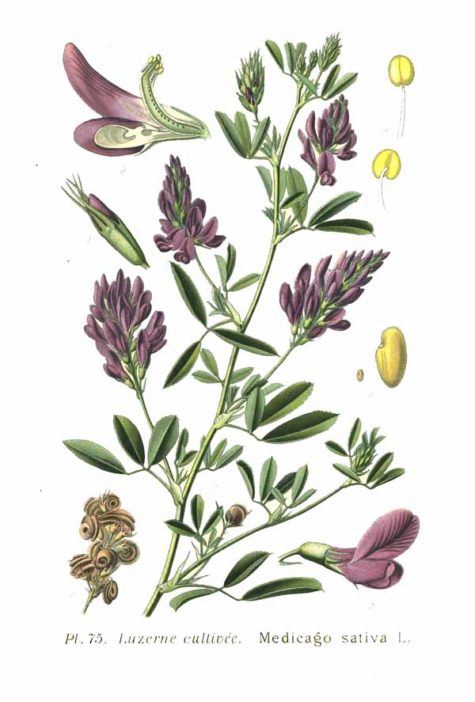
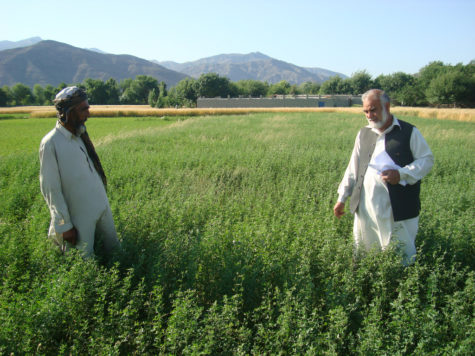
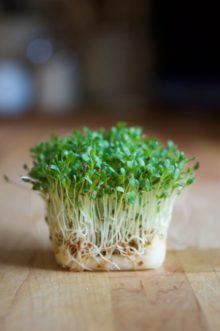
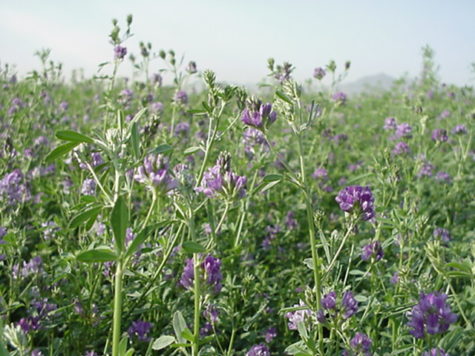
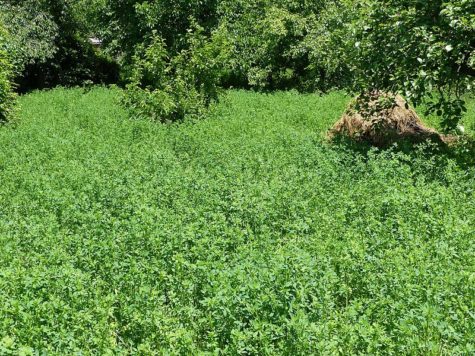



Leave a Reply